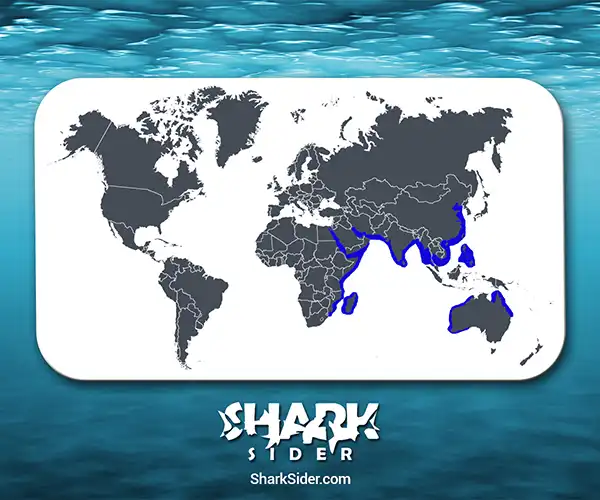The snaggletooth shark is the only surviving member of its genus Hemipristis. Also called the fossil shark, the species belongs to the family of weasel sharks. They are found in warm coastal waters of the Indo-West Pacific and are rarely spotted.
Snaggletooth Shark Scientific Classification |
|
| Kingdom | Animalia |
| Phylum | Chordata |
| Class | Chondrichthyes |
| Order | Carcharhiniformes |
| Family | Hemigaleidae |
| Genus | Hemipristis |
| Scientific Name | Hemipristis elongata |
Description
They grow to a length of 240 cm. Males hit maturity while their body size is 110cm, while females reach maturity at 120cm. Pups of snaggletooth sharks range from 45 – 52 cm long at birth.
The snaggletooth shark has no distinct markings on its body which is light greyish or bronze.
They have a slender, spindle-shaped body with a rounded snout. The mouth is about 50 – 70% of its body’s width.
Their genus name Hemipristis meaning “Half Saw,” refers to their irregular-sharp teeth with jagged serrations on their upper jaws. The bottom jaw consists of hooked teeth.
Their gill slits are very long and can be up to thrice the length of the eyes in adults.
The fins of the snaggletooth shark are strongly curved, with the anal, second dorsal, pectoral, and pelvic fins concave-shaped.
Where do they live
Map Of The Snaggletooth Shark’s Habitat

The population of these sharks is found distributed across the Indo-West Pacific(including the Red Sea). They are even found in southeast Africa to the Philippines, north towards China, and southwards in Australia. They are absent in the western hemisphere.
They dwell at depths of continental shelves ranging from 1 – 130 meters, at the bottom of warm water columns in coastal areas.
Behavior
Dietary
The snaggletooth shark feed on bony fish, rays, crabs, mollusks, cephalopods, and other sharks.
Reproduction
The mating behavior involves a distinct pattern.
Reproduction in snaggletooth sharks is through placental viviparity, where the shark carries its progeny in a placenta-like structure formed when the wall of the embryonic yolk sac fuses with the uterine wall. An umbilical cord is attached to the placental system.
The sharks follow a seasonal reproductive cycle with two to eleven cubs in a litter. Female snaggletooth sharks gestate for seven to eight months.
The species can live up to fifteen years.
Adaptations
Their unique streamlined body helps them swim faster in water. This ability is an advantage while hunting and capturing prey.
Interactions with humans
The IUCN has listed snaggletooth sharks as a vulnerable species. The high demand for their meat is the reason for overfishing and their subsequent population decline.
Despite decreasing numbers due to overfishing, these sharks have a fast reproductive rate and can rejuvenate their population. This ability hasn’t saved the species due to their over-excessive killing and capturing.
There are no conservation procedures currently active to protect the specific species.
